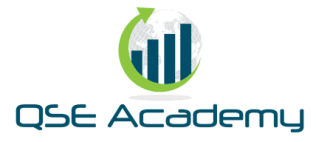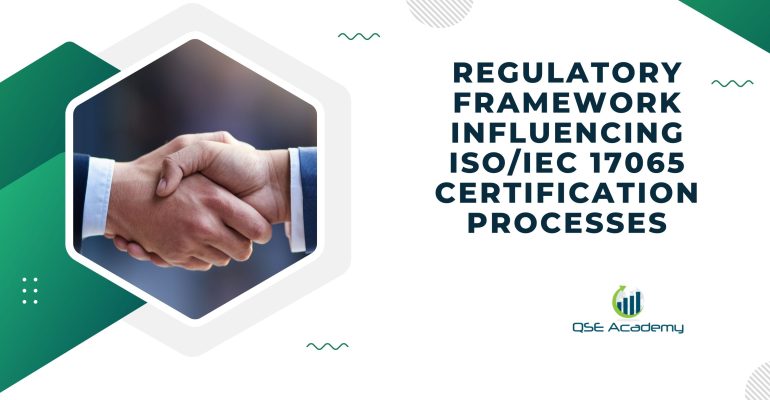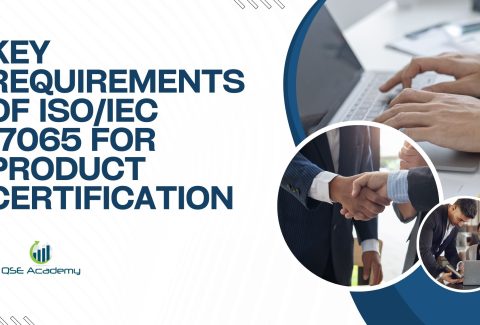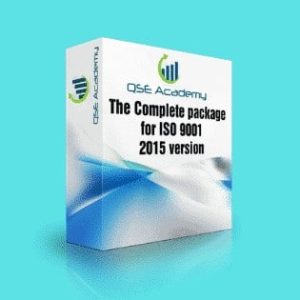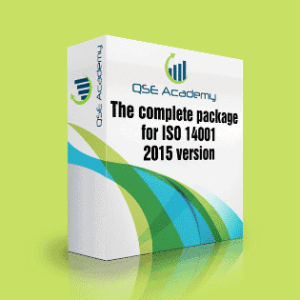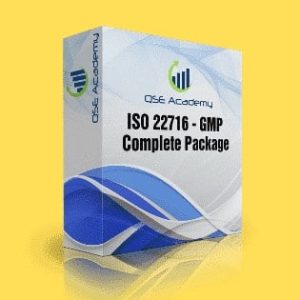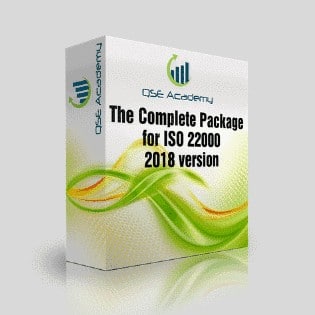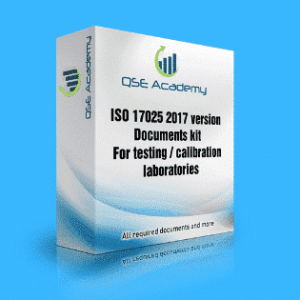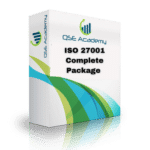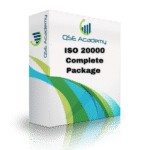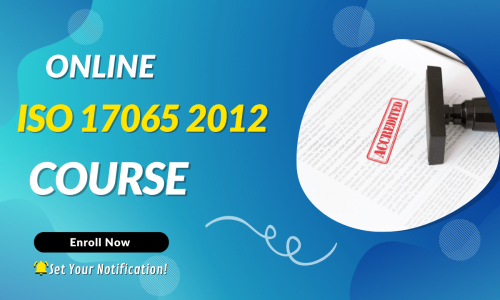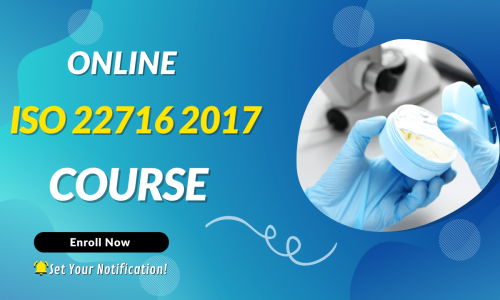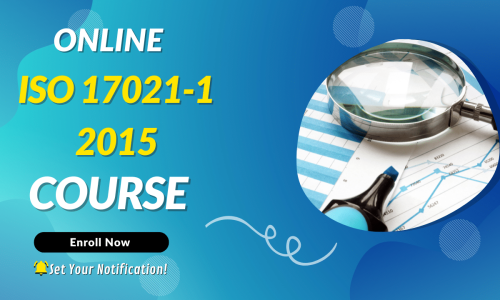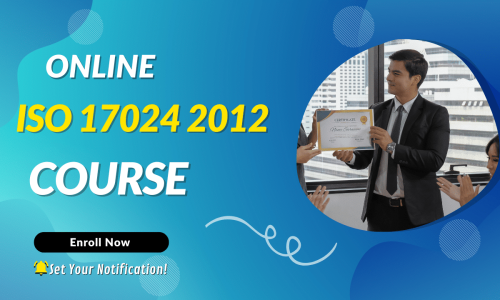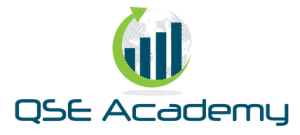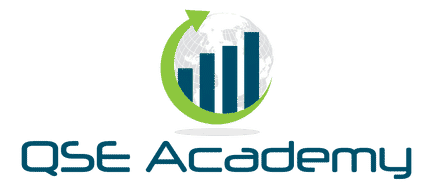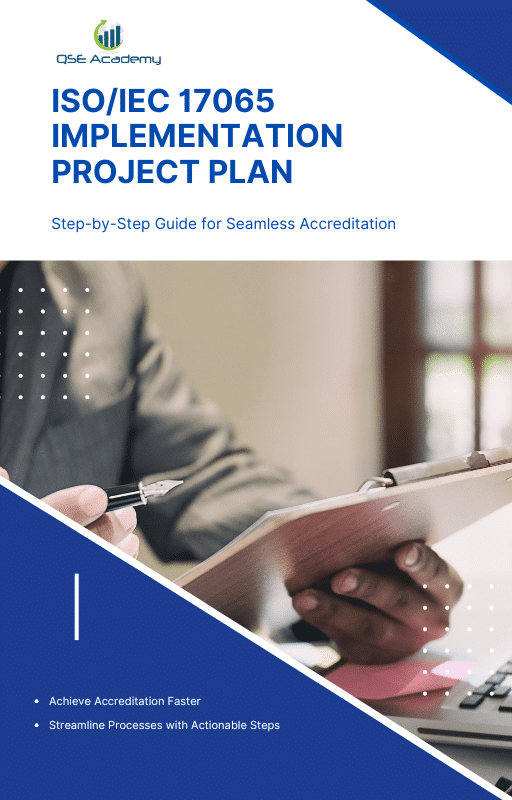Regulatory Framework Influencing ISO/IEC 17065 Certification Processes
Regulatory Framework Influencing ISO/IEC 17065 Certification Processes
If you’re involved in product, service, or process certification, you’ve probably heard about ISO/IEC 17065 certification. This international standard ensures that certification bodies operate fairly, consistently, and with full impartiality. But did you know that achieving and maintaining compliance isn’t just about following the standard itself? It’s also about understanding the regulatory framework for ISO 17065 certification—the set of rules, laws, and industry guidelines that shape how certification bodies function worldwide.
A well-structured regulatory framework for ISO 17065 certification is crucial because it provides the legal and operational foundation for certification bodies. It ensures that certifications are credible, trustworthy, and internationally recognized. Without proper regulations, certification decisions could become inconsistent, biased, or even misleading, which would ultimately damage consumer trust and industry credibility.
In this article, we’ll break down the key regulatory influences on ISO 17065 certification, explore how national and international bodies enforce compliance, and discuss how certification bodies can navigate legal challenges while maintaining credibility. Whether you’re a certification body, an industry professional, or just someone curious about how regulatory frameworks shape ISO 17065 certification, this guide will help you understand why regulations matter and how they impact certification processes.
So, let’s dive in and explore the regulatory framework for ISO 17065 certification—what it means, who enforces it, and why it’s essential for global trade and industry trust!
What is ISO/IEC 17065 Certification and Why is Regulation Important?
Now that we’ve set the stage, let’s talk about ISO/IEC 17065 certification and why the regulatory framework for ISO 17065 certification plays such a vital role in how certification bodies operate.
At its core, ISO/IEC 17065 is an international standard that ensures certification bodies follow a structured, fair, and impartial process when certifying products, services, or processes. But here’s the thing—having a standard isn’t enough. For certification to truly hold value, there needs to be a regulatory framework that ensures these certification bodies aren’t just following the rules on paper but are actually accountable for their decisions in the real world.
The Role of ISO 17065 in Certification Processes
ISO/IEC 17065 certification is like the backbone of trust in many industries. It provides a clear structure that certification bodies must follow, ensuring that certifications are based on solid, transparent evaluation criteria rather than random or biased decisions.
But where does the regulatory framework for ISO 17065 certification come in? It provides:
✅ Legal backing – Many countries require that certification bodies comply with ISO 17065 regulations to operate legally.
✅ Global recognition – Following a structured regulatory framework ensures that certifications are accepted across borders.
✅ Consumer protection – Regulations ensure that certifications are issued ethically, fairly, and with full accountability.
Without a strong regulatory framework for ISO 17065 certification, the entire system could fall apart—leading to inconsistent standards, lack of trust, and potential fraud in the certification process.
Why a Strong Regulatory Framework is Essential
Imagine if there were no regulations guiding how certification bodies operate. What would stop an organization from issuing fake or biased certifications? How could businesses and consumers trust that a product, service, or process meets real industry standards?
This is exactly why the regulatory framework for ISO 17065 certification is so important. It ensures that:
🔹 Certifications are reliable – Every certification body must meet strict ISO 17065 compliance standards before they can operate.
🔹 Certification bodies remain impartial – Regulations prevent organizations from issuing certifications to themselves or their close business partners, ensuring fair evaluation.
🔹 International trade is streamlined – A globally recognized regulatory framework for ISO 17065 certification helps businesses gain access to new markets without unnecessary hurdles.
Simply put, regulations turn ISO 17065 from a theoretical standard into a real, enforceable system that maintains credibility worldwide.
Final Thoughts on ISO 17065 and Its Regulatory Importance
ISO/IEC 17065 certification is a powerful tool for ensuring trust and transparency, but it only works when backed by a solid regulatory framework. Without proper oversight, certifications could become meaningless, harming both businesses and consumers.
In the next section, we’ll explore which regulatory bodies enforce ISO 17065 compliance and how different countries and industries apply their own rules to ensure certification integrity. Stay with us as we dive deeper into the global regulatory framework for ISO 17065 certification!
Key Regulatory Bodies and Their Impact on ISO 17065 Certification
Now that we’ve established why a strong regulatory framework for ISO 17065 certification is essential, let’s explore who enforces these regulations and how they impact certification bodies worldwide.
ISO/IEC 17065 doesn’t exist in a vacuum. While it sets the global standard for how certification bodies should operate, it’s the regulatory organizations and accreditation bodies that ensure compliance. These groups oversee everything from audits and inspections to accreditation approvals, making sure that certification bodies are operating fairly, transparently, and consistently.
ISO and International Regulatory Influence
Let’s start with the big picture. ISO (International Organization for Standardization) is responsible for developing the ISO 17065 standard, but it doesn’t actually enforce it. Instead, enforcement is handled by accreditation bodies that ensure certification bodies comply with ISO 17065 regulations.
Some of the key global organizations influencing the regulatory framework for ISO 17065 certification include:
🌍 International Accreditation Forum (IAF) – Ensures that ISO 17065-accredited certification bodies operate under the same high standards worldwide.
🌍 International Laboratory Accreditation Cooperation (ILAC) – Focuses on global recognition of accreditation processes.
🌍 World Trade Organization (WTO) Agreements – Encourages mutual recognition of certifications across different countries to support global trade.
These organizations ensure that the ISO 17065 certification process is fair, consistent, and internationally recognized—which is especially important for businesses that operate in multiple countries.
National and Regional Regulations Affecting ISO 17065
While ISO sets the international guidelines, each country has its own regulatory framework for ISO 17065 certification. This means that while a certification body might be accredited in one country, it may need additional approvals to operate in another.
Here are some key national and regional accreditation bodies that enforce ISO 17065 compliance:
🏛 United States: ANSI National Accreditation Board (ANAB) – Oversees ISO 17065-accredited certification bodies in the U.S., ensuring compliance with both national and international standards.
🏛 United Kingdom: United Kingdom Accreditation Service (UKAS) – The sole national accreditation body in the UK, ensuring that certification bodies meet ISO 17065 requirements.
🏛 Germany: Deutsche Akkreditierungsstelle (DAkkS) – Regulates and accredits certification bodies in Germany, aligning with ISO 17065 regulations.
🏛 European Union: European Co-operation for Accreditation (EA) – Works with national accreditation bodies across Europe to harmonize ISO 17065 compliance within the EU market.
🏛 Asia & Australia: Various accreditation bodies, such as JAB (Japan Accreditation Board), CNAS (China National Accreditation Service), and JAS-ANZ (Joint Accreditation System of Australia and New Zealand), regulate ISO 17065 certification in their respective regions.
Because regulations differ from country to country, certification bodies must carefully navigate the regulatory framework for ISO 17065 certification to ensure their certifications are recognized internationally.
Industry-Specific Regulations That Align with ISO 17065
In addition to government regulations, many industries have sector-specific regulatory frameworks that align with ISO 17065 certification. This ensures that certification bodies working within these industries are operating under recognized legal and industry standards.
Here are a few key industries that rely on ISO 17065 accreditation and have their own regulatory requirements:
🍏 Food Safety & Agriculture:
- GlobalG.A.P., HACCP, USDA Organic, and EU Organic Certifications all require certification bodies to comply with ISO 17065 regulations to ensure food safety and sustainability.
⚡ Product Safety & Electrical Compliance:
- Certifications like CE marking (European Union), UL (United States), and CCC (China Compulsory Certification) require certification bodies to be ISO 17065 accredited before they can certify products.
🌱 Environmental & Sustainability Certifications:
- Eco-labels like Energy Star, FSC (Forest Stewardship Council), and LEED (Leadership in Energy and Environmental Design) ensure that certification bodies are operating under the regulatory framework for ISO 17065 certification.
These industry-specific regulations reinforce the importance of ISO 17065 compliance and ensure that certification bodies are meeting legal and ethical standards.
Final Thoughts on Regulatory Bodies and Their Role in ISO 17065 Certification
The regulatory framework for ISO 17065 certification is not just about following rules—it’s about ensuring certification integrity, market trust, and international acceptance.
Here’s what we’ve learned:
✅ ISO sets the standard, but accreditation bodies enforce compliance.
✅ Each country has its own accreditation body overseeing ISO 17065 certification.
✅ Industry-specific regulations align with ISO 17065 to ensure product, service, and environmental integrity.
For certification bodies, understanding and navigating the regulatory framework for ISO 17065 certification is essential for gaining market acceptance, avoiding legal challenges, and ensuring long-term success.
In the next section, we’ll explore the legal and compliance challenges that certification bodies face when trying to meet ISO 17065 regulatory requirements—and how to overcome them!
Legal and Compliance Challenges for Certification Bodies
Navigating the regulatory framework for ISO 17065 certification isn’t always smooth sailing. Certification bodies often face legal and compliance challenges that can make the process complex, time-consuming, and, at times, frustrating. But don’t worry—you’re not alone! Every certification body working toward ISO 17065 compliance encounters obstacles along the way.
The key is understanding these challenges upfront and having strategies in place to address them effectively. Let’s take a closer look at some of the biggest legal and compliance hurdles and how to overcome them successfully.
Adapting to Evolving Regulatory Requirements
One of the biggest challenges certification bodies face is keeping up with constantly changing regulations. The regulatory framework for ISO 17065 certification isn’t static—it evolves to reflect new industry standards, trade agreements, and legal requirements.
🔍 Why this is a challenge:
- Laws and accreditation policies vary by country and industry, making compliance difficult for international certification bodies.
- Frequent updates in consumer protection, environmental laws, and trade policies require certification bodies to adjust their practices continuously.
- Failing to stay updated can lead to compliance issues, loss of accreditation, or even legal action.
✅ How to overcome it:
- Subscribe to regulatory updates from national accreditation bodies and industry associations.
- Engage in regular compliance training for your team to stay informed about evolving ISO 17065 regulations.
- Work closely with regulatory bodies to ensure your certification processes align with the latest legal requirements.
💡 Pro Tip: Many successful organizations operating under the regulatory framework for ISO 17065 certification assign a dedicated compliance officer to monitor and interpret regulatory changes.
For certification bodies operating internationally, dealing with conflicting regulations in different countries is a major challenge. What’s considered ISO 17065 compliant in one country may not meet the legal requirements in another.
🔍 Why this is a challenge:
- Some countries have stricter or additional requirements beyond ISO 17065.
- Mutual recognition agreements (MRAs) between countries don’t always apply to all industries.
- Certification bodies must sometimes undergo multiple accreditation processes to operate in different regions.
✅ How to overcome it:
- Research country-specific accreditation requirements before expanding into a new market.
- Obtain multiple accreditations where necessary to ensure global recognition.
- Partner with local certification bodies in regions with strict national regulations.
💡 Pro Tip: Many certification bodies join international accreditation networks to simplify cross-border compliance within the regulatory framework for ISO 17065 certification.
Liability and Legal Risks in Certification Decisions
Certification bodies carry significant legal responsibility for the certifications they issue. If a certified product, service, or process fails to meet safety or quality standards, the certification body may face legal consequences.
🔍 Why this is a challenge:
- Certification bodies can be held legally accountable for improperly issued certifications.
- A certification dispute with a client can lead to reputation damage or legal battles.
- In some cases, government regulators may impose fines or revoke accreditation for non-compliance.
✅ How to overcome it:
- Ensure complete impartiality in certification decisions—avoid conflicts of interest.
- Document every step of the certification process to provide legal proof of compliance.
- Implement a dispute resolution process to handle challenges professionally and legally.
💡 Pro Tip: Certification bodies working within the regulatory framework for ISO 17065 certification often invest in liability insurance to protect themselves from potential legal claims.
Final Thoughts on Legal and Compliance Challenges
The regulatory framework for ISO 17065 certification is designed to ensure fair, transparent, and internationally recognized certification practices. However, staying compliant isn’t always easy. Certification bodies must be proactive, adaptable, and well-informed to overcome challenges like:
✅ Evolving regulatory changes – Stay updated and train your team regularly.
✅ Conflicting international regulations – Research country-specific requirements and seek partnerships where needed.
✅ Legal liability risks – Maintain impartiality, thorough documentation, and dispute resolution systems.
By taking a structured approach to compliance, certification bodies can navigate legal risks, strengthen their credibility, and maintain trust in their certifications.
In the next section, we’ll explore best practices for ensuring long-term compliance within the regulatory framework for ISO 17065 certification—so you can keep your certification body running smoothly and efficiently. Stay tuned!
Best Practices for Ensuring Compliance with the Regulatory Framework for ISO 17065 Certification
By now, we’ve covered the regulatory framework for ISO 17065 certification, the key organizations that enforce it, and the legal challenges certification bodies face. But the real question is: How can your organization ensure ongoing compliance and avoid regulatory pitfalls?
Staying compliant isn’t just about passing an initial audit—it’s about maintaining consistent, long-term adherence to ISO 17065 requirements. To help, we’ve gathered some of the best strategies used by successful certification bodies to stay compliant, efficient, and trusted.
Establishing a Strong Compliance Management System
Think of compliance like a well-oiled machine—it needs regular maintenance to keep running smoothly. A structured compliance management system (CMS) ensures that your certification body meets all regulatory requirements under ISO 17065 at all times.
🔍 How to do it:
✅ Document every certification decision—this helps prove compliance if an audit or legal issue arises.
✅ Create a compliance checklist to ensure all ISO 17065 regulatory requirements are met before issuing a certification.
✅ Conduct risk assessments to identify potential gaps in your certification process.
💡 Pro Tip: Many organizations within the regulatory framework for ISO 17065 certification use compliance tracking software to manage records and monitor updates efficiently.
Continuous Staff Training on Regulatory Changes
Compliance is a team effort—if your staff isn’t up to speed on ISO 17065 regulatory updates, maintaining compliance becomes much harder. Regular training ensures that everyone understands their role in the certification process and stays aware of new legal requirements.
🔍 How to do it:
✅ Host quarterly training sessions to keep auditors, decision-makers, and support staff informed.
✅ Create a compliance handbook with up-to-date ISO 17065 regulations and best practices.
✅ Encourage team members to attend industry conferences and workshops to stay ahead of regulatory trends.
💡 Pro Tip: Certification bodies that prioritize ongoing training reduce compliance risks and improve audit performance within the regulatory framework for ISO 17065 certification.
Collaborating with Regulatory Authorities and Industry Groups
No certification body operates in isolation. Building strong relationships with accreditation bodies, industry groups, and regulatory agencies helps organizations stay informed, adapt to changing requirements, and even influence future regulatory policies.
🔍 How to do it:
✅ Join industry associations—networks like the International Accreditation Forum (IAF) provide updates and guidance on evolving standards.
✅ Maintain open communication with your national accreditation body to get ahead of potential compliance challenges.
✅ Participate in working groups and advisory panels that discuss regulatory changes affecting certification bodies.
💡 Pro Tip: Many leading organizations in the regulatory framework for ISO 17065 certification have liaison officers dedicated to regulatory affairs—this ensures they never miss critical updates.
Implementing Regular Internal Audits
Think of internal audits like a dress rehearsal for official compliance inspections. Regular internal audits help catch small compliance issues before they become big problems, ensuring your certification body is always ISO 17065 ready.
🔍 How to do it:
✅ Schedule biannual or quarterly internal audits to review documentation, decision-making, and impartiality policies.
✅ Assign an internal compliance officer to lead audit efforts and flag any non-conformities.
✅ Simulate mock accreditation audits to ensure your team is fully prepared for external assessments.
💡 Pro Tip: Certification bodies that integrate ongoing internal audits into their workflow maintain higher compliance rates and fewer regulatory issues within the regulatory framework for ISO 17065 certification.
Leveraging Technology for Compliance Efficiency
Regulatory compliance can involve a lot of paperwork—but modern technology can automate processes, streamline documentation, and reduce human error. Digital tools help certification bodies stay organized and audit-ready at all times.
🔍 How to do it:
✅ Use compliance management software to track regulatory changes and store certification records.
✅ Implement AI-driven audit tools that flag inconsistencies in certification decisions.
✅ Set up automated reminders for required document updates and upcoming compliance deadlines.
💡 Pro Tip: Many organizations operating under the regulatory framework for ISO 17065 certification have switched to cloud-based systems for easier data management and compliance tracking.
Final Thoughts on Ensuring Compliance with ISO 17065 Regulations
Maintaining compliance with the regulatory framework for ISO 17065 certification isn’t just about avoiding penalties—it’s about building trust, improving efficiency, and ensuring long-term credibility.
✅ Develop a strong compliance management system to track and document certification decisions.
✅ Invest in continuous staff training to ensure every team member understands ISO 17065 regulatory updates.
✅ Engage with regulatory bodies and industry groups to stay informed about changes.
✅ Conduct regular internal audits to identify and correct compliance gaps.
✅ Use technology to simplify compliance tracking and minimize errors.
By following these best practices, your certification body will not only stay ISO 17065 compliant but also build a reputation for transparency, reliability, and regulatory excellence.
Next, we’ll look at the future trends shaping the regulatory framework for ISO 17065 certification, including digital innovations, global policy shifts, and emerging industry regulations. Stay tuned!
Future Trends in the Regulatory Framework for ISO 17065 Certification
As industries evolve and technology advances, so does the regulatory framework for ISO 17065 certification. What worked a decade ago may no longer be sufficient to meet today’s compliance, consumer protection, and market demands. Certification bodies must stay ahead of emerging trends to ensure they remain relevant, efficient, and aligned with evolving regulatory expectations.
So, what does the future hold for the regulatory framework for ISO 17065 certification? Let’s explore some of the key trends shaping the landscape.
Digitalization and Automation in Compliance Management
One of the biggest shifts we’re seeing in the regulatory framework for ISO 17065 certification is the move toward digitalization and automation. Paper-based compliance tracking is quickly becoming a thing of the past, replaced by smart, technology-driven solutions that improve efficiency and reduce errors.
🔍 How this trend is shaping the future:
✅ Automated compliance monitoring – AI-powered tools can now flag inconsistencies in certification decisions, ensuring greater accuracy.
✅ Blockchain for certification records – Some certification bodies are exploring blockchain technology to create tamper-proof certification records, making compliance more transparent and verifiable.
✅ Real-time audit management software – Digital platforms now allow certification bodies to conduct, track, and manage audits seamlessly, reducing paperwork and administrative burden.
💡 Pro Tip: Forward-thinking organizations within the regulatory framework for ISO 17065 certification are already adopting AI-driven compliance tools to improve efficiency and enhance trust in the certification process.
Increasing Globalization of Certification Standards
With global trade and supply chains expanding, we’re seeing a strong push toward harmonization of certification standards across different regions. The goal? To make it easier for businesses to operate internationally without having to meet multiple, conflicting certification requirements.
🔍 How this trend is shaping the future:
✅ Mutual Recognition Agreements (MRAs) – Countries and trade blocs are increasingly recognizing ISO 17065-accredited certifications as equivalent, making it easier for certified products to enter new markets.
✅ Stronger alignment between national and international regulations – Many countries are now adopting ISO 17065-based accreditation frameworks to facilitate global acceptance.
✅ Cross-border accreditation programs – Some certification bodies are partnering with regional accreditation bodies to simplify compliance across multiple jurisdictions.
💡 Pro Tip: Certification bodies that proactively engage with international accreditation forums will have a competitive edge in the evolving regulatory framework for ISO 17065 certification.
Sustainability and Ethical Regulations in Certification
As industries shift toward sustainable and socially responsible practices, regulatory bodies are expanding compliance requirements to include environmental, social, and governance (ESG) factors. This is influencing how certification bodies operate and the standards they must uphold.
🔍 How this trend is shaping the future:
✅ Eco-labeling and green certifications – More certification bodies are now required to assess environmental impact, ensuring that sustainability claims are backed by reliable data.
✅ Fair trade and ethical sourcing regulations – ISO 17065-compliant certification bodies are now being evaluated on how well they integrate ethical considerations into their certification decisions.
✅ Carbon footprint and climate compliance – Governments are introducing stricter carbon reduction requirements, meaning certification bodies may soon have to verify and certify sustainability commitments.
💡 Pro Tip: Certification bodies that embrace sustainability and ethical compliance standards will be better positioned in the future regulatory framework for ISO 17065 certification.
The Growing Role of Cybersecurity and Data Protection
With the rise of digital certifications, online audits, and cloud-based compliance tracking, certification bodies must strengthen their cybersecurity practices. Regulators are placing more emphasis on data protection to prevent breaches, fraud, and certification misuse.
🔍 How this trend is shaping the future:
✅ Stronger cybersecurity protocols for certification bodies – Organizations must implement ISO 27001-based security measures to protect sensitive certification data.
✅ Encrypted and secure certification records – The move toward digitally signed and verifiable certification documents is gaining traction.
✅ Compliance with global data protection laws – Certification bodies must now align with GDPR (Europe), CCPA (California), and other international data privacy regulations.
💡 Pro Tip: The future regulatory framework for ISO 17065 certification will likely include stricter cybersecurity measures, so certification bodies should start preparing now.
Final Thoughts on the Future of ISO 17065 Compliance
The regulatory framework for ISO 17065 certification is evolving to keep pace with technology, globalization, sustainability, and security needs. Certification bodies that adapt to these changes early will gain a competitive advantage while maintaining trust and compliance in an increasingly complex world.
Here’s what’s coming next:
✅ Automation and AI-driven compliance tools to streamline certification processes.
✅ Greater global standardization to simplify cross-border certification recognition.
✅ Stronger sustainability and ethical requirements integrated into certification frameworks.
✅ Enhanced cybersecurity protocols to protect certification data.
As we move forward, certification bodies must stay informed, invest in the right technology, and continuously improve their processes to thrive in the future regulatory framework for ISO 17065 certification.
In the final section, we’ll bring everything together and discuss how certification bodies can proactively prepare for these changes. Stay with us!
Conclusion – The Evolving Role of the Regulatory Framework for ISO 17065 Certification
As we’ve explored throughout this article, the regulatory framework for ISO 17065 certification plays a crucial role in ensuring that certification bodies operate with credibility, impartiality, and international recognition. But as industries shift, technology advances, and global trade expands, compliance requirements will continue to evolve.
For certification bodies, the key to long-term success isn’t just about meeting current regulations—it’s about staying ahead of future changes. Whether it’s adopting digital compliance tools, aligning with sustainability goals, or preparing for stricter cybersecurity requirements, organizations that proactively adapt will be better positioned in the evolving regulatory framework for ISO 17065 certification.
Key Takeaways: Preparing for the Future of ISO 17065 Compliance
✅ Regulations are constantly changing, and certification bodies must stay informed to remain compliant.
✅ International accreditation bodies and national regulators are working toward greater global harmonization of ISO 17065 standards.
✅ Sustainability and ethical considerations are becoming a bigger part of compliance frameworks.
✅ Cybersecurity and data protection will play an increasingly important role in ensuring trustworthy, digital certification processes.
✅ Leveraging technology like AI-driven compliance tools and blockchain verification can help certification bodies maintain efficiency and transparency.
The Next Steps for Certification Bodies
So, what can certification bodies do now to ensure they stay ahead in the evolving regulatory framework for ISO 17065 certification?
🔹 Stay engaged with regulatory updates – Subscribe to newsletters from ISO, IAF, and national accreditation bodies.
🔹 Invest in compliance technology – Automate documentation, audits, and regulatory tracking to improve efficiency.
🔹 Train your team continuously – Keep employees informed about changes in ISO 17065 compliance requirements.
🔹 Collaborate with industry and regulatory authorities – Build strong relationships with accreditation bodies and participate in policy discussions.
🔹 Plan for long-term compliance – Develop a forward-thinking compliance strategy that includes future trends like sustainability, AI, and global trade changes.
Final Thoughts on the Regulatory Framework for ISO 17065 Certification
The regulatory framework for ISO 17065 certification isn’t just a set of rules—it’s a roadmap for building trust, ensuring fair certification practices, and strengthening global trade. While adapting to regulatory changes may seem challenging, taking a proactive, strategic approach will help certification bodies navigate compliance with confidence.
By staying informed, investing in technology, and prioritizing continuous improvement, certification bodies can not only meet regulatory requirements but also enhance their credibility, efficiency, and long-term success.
Are you ready to future-proof your ISO 17065 compliance? Start preparing today, and set your organization up for a strong, sustainable, and globally recognized certification process!
I hold a Master’s degree in Quality Management, and I’ve built my career specializing in the ISO/IEC 17000 series standards, including ISO/IEC 17025, ISO 15189, ISO/IEC 17020, and ISO/IEC 17065. My background includes hands-on experience in accreditation preparation, documentation development, and internal auditing for laboratories and certification bodies. I’ve worked closely with teams in testing, calibration, inspection, and medical laboratories, helping them achieve and maintain compliance with international accreditation requirements. I’ve also received professional training in internal audits for ISO/IEC 17025 and ISO 15189, with practical involvement in managing nonconformities, improving quality systems, and aligning operations with standard requirements. At QSE Academy, I contribute technical content that turns complex accreditation standards into practical, step-by-step guidance for labs and assessors around the world. I’m passionate about supporting quality-driven organizations and making the path to accreditation clear, structured, and achievable.
